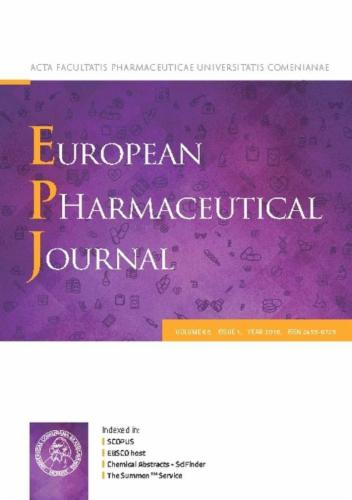pH-stat与pH-shift脂肪分解模型:探索尼洛替尼脂基制剂的体内外关系。
IF 4.7
3区 医学
Q1 PHARMACOLOGY & PHARMACY
引用次数: 0
摘要
体外脂解pH值法是评价脂基制剂(LBFs)的好方法,然而,缺乏模拟胃肠道转化可能导致药物沉淀的高估,特别是在弱碱性药物的情况下。本研究旨在通过使用弱碱性模型药物尼罗替尼评估多种LBFs,比较传统的pH-stat方法和pH-shift脂解方法。此外,该研究试图评估体外-体内关系(IVIVRs),并加强对这些模型预测能力的理解。对4种含尼洛替尼的lbf进行体外实验,并在Sprague Dawley大鼠体内进行药代动力学分析。配方包括过饱和Peceol®溶液(sLBF), Peceol®脂质悬浮液(根据脂质配方分类系统(LFCS)为I型),III型LFCS中链悬浮液和IV型LFCS悬浮液。Peceol®sLBF和III型LFCS制剂的生物利用度最高。两种体外脂解模型均建立了强ivivr。总之,利用这两种体外模型具有明显的优势,这取决于发展阶段和正在解决的具体问题。这种方法有助于更有效的配方开发和减少早期药物开发对动物研究的依赖。本文章由计算机程序翻译,如有差异,请以英文原文为准。

pH-stat versus pH-shift lipolysis model: Exploring in vitro-in vivo relationships for lipid-based formulations of nilotinib
The pH-stat in vitro lipolysis method is well established for evaluating lipid-based formulations (LBFs), however the absence of a simulated gastrointestinal transition may lead to an overestimation of drug precipitation particularly in the case of weakly basic drugs. This study aimed to compare the conventional pH-stat method with a pH-shift lipolysis approach by evaluating a diverse set of LBFs using nilotinib, a weakly basic model drug. Additionally, the study sought to assess in vitro–in vivo relationships (IVIVRs) and enhance understanding of the predictive capabilities of these models. Four nilotinib-containing LBFs were tested in vitro, and pharmacokinetic profiles were evaluated in Sprague Dawley rats. The formulations included a supersaturated Peceol® solution (sLBF), a Peceol® lipid suspension (type I according to the Lipid Formulation Classification System (LFCS)), a type III LFCS medium-chain suspension, and a type IV LFCS suspension. The highest bioavailability was achieved with the Peceol® sLBF and the type III LFCS formulation. Strong IVIVRs were established for both in vitro lipolysis models. In conclusion, utilizing both in vitro models offered distinct advantages depending on the stage of development and the specific questions being addressed. This approach contributes to more efficient formulation development and a reduced reliance on animal studies in early-stage drug development.
求助全文
通过发布文献求助,成功后即可免费获取论文全文。
去求助
来源期刊
CiteScore
9.60
自引率
2.20%
发文量
248
审稿时长
50 days
期刊介绍:
The journal publishes research articles, review articles and scientific commentaries on all aspects of the pharmaceutical sciences with emphasis on conceptual novelty and scientific quality. The Editors welcome articles in this multidisciplinary field, with a focus on topics relevant for drug discovery and development.
More specifically, the Journal publishes reports on medicinal chemistry, pharmacology, drug absorption and metabolism, pharmacokinetics and pharmacodynamics, pharmaceutical and biomedical analysis, drug delivery (including gene delivery), drug targeting, pharmaceutical technology, pharmaceutical biotechnology and clinical drug evaluation. The journal will typically not give priority to manuscripts focusing primarily on organic synthesis, natural products, adaptation of analytical approaches, or discussions pertaining to drug policy making.
Scientific commentaries and review articles are generally by invitation only or by consent of the Editors. Proceedings of scientific meetings may be published as special issues or supplements to the Journal.

 求助内容:
求助内容: 应助结果提醒方式:
应助结果提醒方式:


